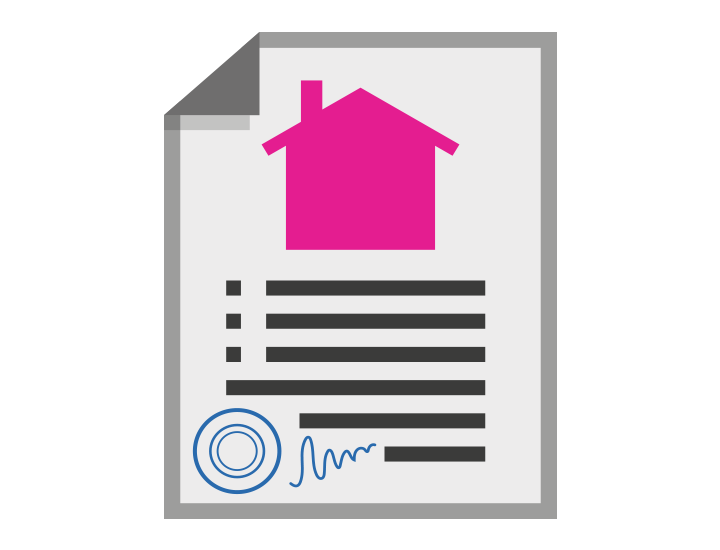Are you in the process of buying a property and are wondering about getting a survey? Don’t make the mistake that far too many homebuyers still make, thinking it’s an unnecessary expense. A study carried out by the Royal Institution of Chartered Surveyors (RICS) revealed that those who didn’t bother with a home survey faced unexpected repair work after moving in, resulting in £5,750 in costs on average, and for some, the cost can be substantially higher. So, do yourself a big favour and assess the risk of your investment before you sign on the dotted line.
What is a Chartered Surveyor?
Chartered Surveyors are independent experts who will give an objective appraisal of the condition of the property you are thinking of buying. Whether you choose a Condition Report, a Home Buyer’s Survey, or a full Building Survey, it is their job to play devil’s advocate and ‘pick holes’, highlighting any defects and issues and associated repairs to put things right.
Common home survey problems
It is by no means uncommon for the survey findings to include areas of concern, both in modern and older properties, and it is well worth being prepared for the sorts of issues you may be faced with. Here are five of the most common home survey problems you are likely to come across, and how to deal with them.
1. Damp issues
Damp in a property can be caused by a number of factors. Penetrating damp occurs when water gets into the house from outside. This can come from leaky roofs, cracked render, and damaged guttering, but it can also be caused by condensation and poor ventilation inside the home. Rising damp is often the result of a missing damp proof course. Dampness can also cause wet rot and dry rot to timbers, both internally and externally.
If damp is detected in a property, and this can vary widely in terms of its severity and the area affected, it may impact the likely repair budget. Once the root cause of damp is identified, it is usually a straightforward process to remedy the problem, though a specialist damp survey may be required to investigate fully, especially if you are buying an older property.
2. Roof problems

Issues with the roof can vary in severity from a couple of cracked tiles to overflowing gutters, defective flashing around chimneys and adjoining buildings, or, in worst-case scenarios, an unstable roof structure that needs replacing. Internal roof insulation and ventilation should also be taken into account.
Your survey should include a visual inspection of the loft, roof, chimneys, and high-level surfaces. Minor repair issues can be carried out by a qualified handyman. If the survey throws up major roofing problems, a roofing contractor should be called for an expert opinion on the work that needs doing and how much it is likely to cost.
Flat roofs typically have a much shorter lifespan than traditional pitched roofs. If your survey indicates significant wear and tear or damage to an area of flat roof, replacement is often the best solution. This should be done by a roofing specialist and should come with a warranty to protect against future issues.
3. Gas and electrics
A Chartered Surveyor is not legally qualified to test any of the utilities in the property. That said, the survey report does usually have a section on ‘services’, with findings based on a visual assessment only. It is standard practice for a general home survey to recommend further investigations into the condition of electrical installations and gas appliances including the central heating boiler.
Electrical issues reported in a specialist property survey can range from relatively small repair jobs to potentially having to rewire the entire property, with cost levels varying accordingly. In addition to any survey, you should ensure that the vendor supplies you with a recent electric test certificate (last 10 years) and a recent boiler test certificate (last 12 months) by a Gas Safe registered engineer.
4. Japanese knotweed

If you’re anything like most homebuyers, you will have never heard of Japanese knotweed before. However, similar to subsidence, properties with knotweed in the garden (or a neighbouring property) can be blighted. It is a fast-growing, pervasive plant that is resilient to conventional methods of control and can be extremely difficult to remove. Crucially, knotweed invades buildings and structures, exploiting cracks and weaknesses. It is strong enough to push up through tarmac and concrete, can interfere with drainage pipes, lifting pipework, and clogging sumps.
The species was first introduced to the UK in the 1800s as an ornamental garden plant and is, therefore, most likely to be found in the vicinity of period properties. If knotweed is declared by your vendor, or identified in the survey, it is usually necessary to eradicate the plant by implementing a Japanese knotweed management plan, and it is illegal to knowingly let it spread into the wild. Mortgage lenders will typically require a management scheme with an insurance-backed guarantee to enable them to lend. Needless to say, these can be expensive.
5. Structural movement
The mere mention of the word ‘subsidence’ can strike fear into homeowners and buyers alike. Structural movement typically manifests as cracks in walls, particularly around doors and windows, though it should be pointed out that many cracks are perfectly innocent and do not present any structural problems whatsoever.
However, if structural movement is highlighted in the survey report, an expert investigation will be urgently required to see how seriously the building is affected. The cause of the problem could be nearby tree roots, leaky underground drains or clay soil shrinkage, and remedial action may include underpinning the building’s foundations - an invasive and expensive undertaking.
Many homebuyers will be put off buying a property with subsidence, on account of the cost involved in addressing the issue. It is also worth noting that homes with a history of subsidence are difficult to get a mortgage for, while home insurance premiums can be exorbitant.
Therefore, to avoid these unexpected costs later down the line, make sure you get a home survey, so you know the ins and outs of your house before it becomes your home.
Contact us today
Are you looking to move home? Contact your local Guild Member today to get started.










